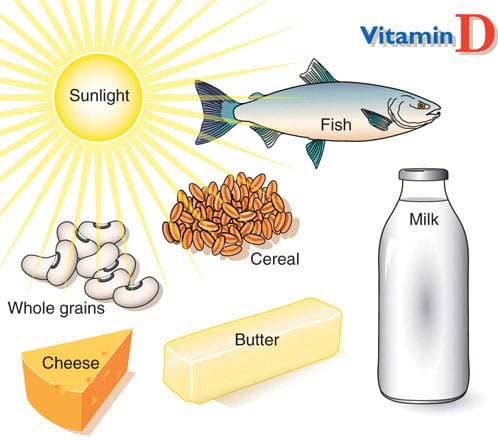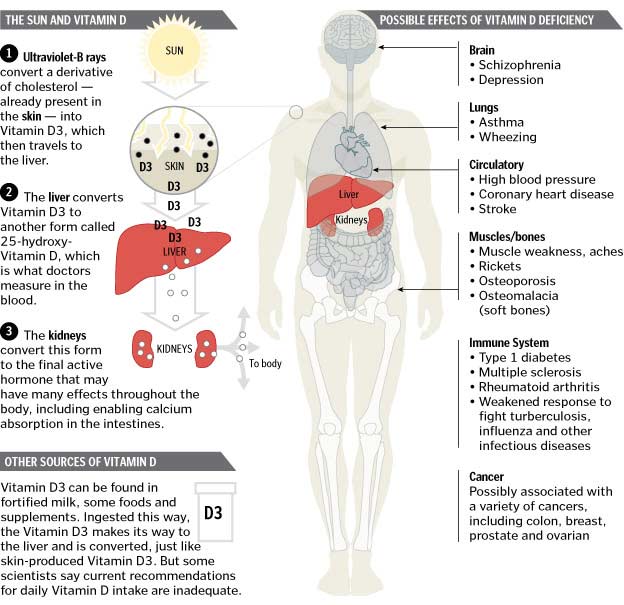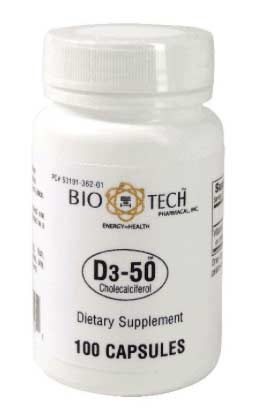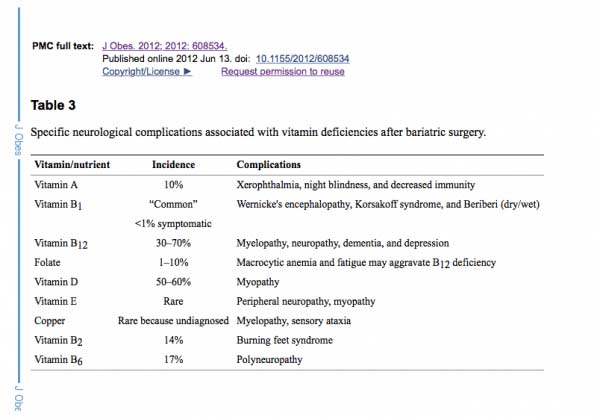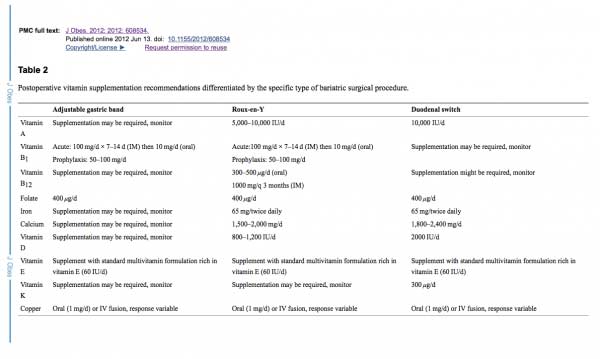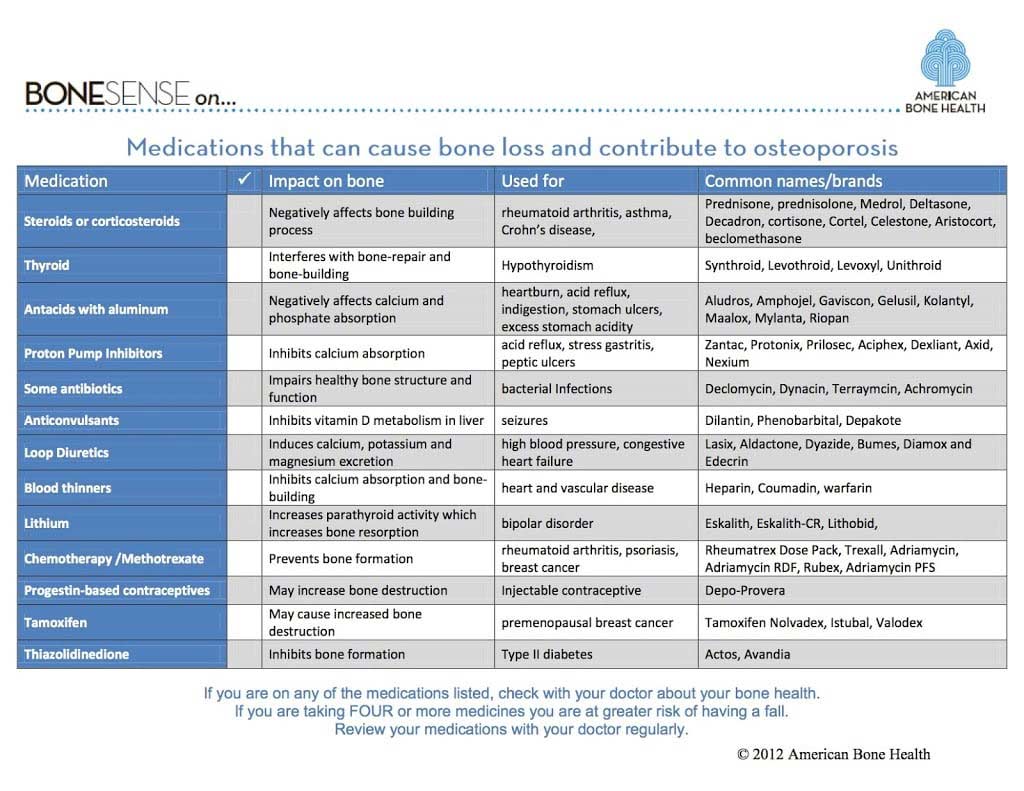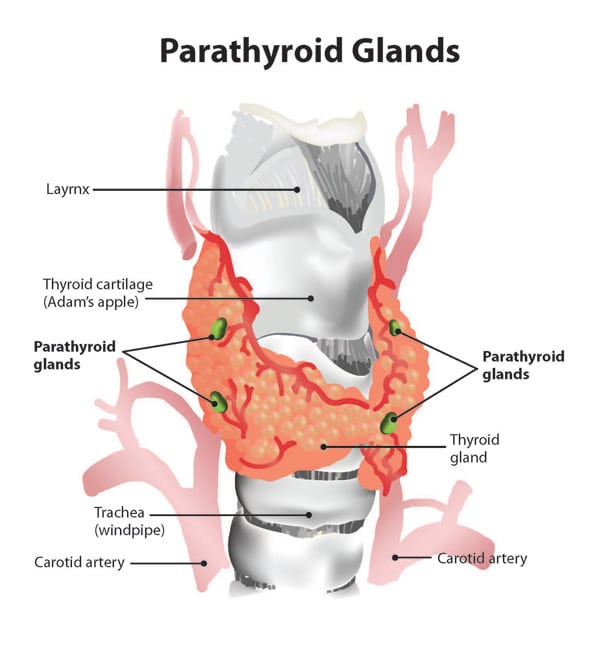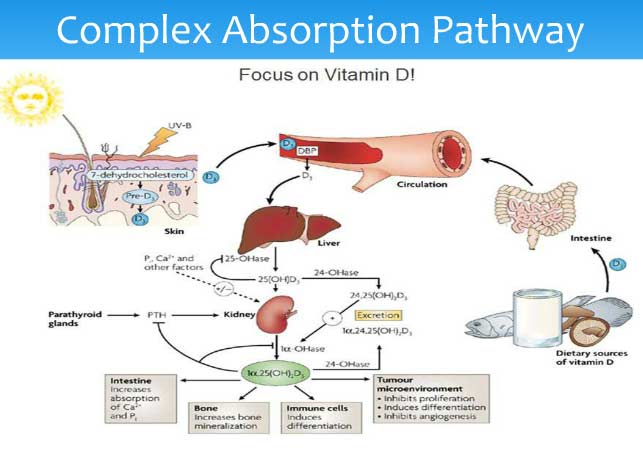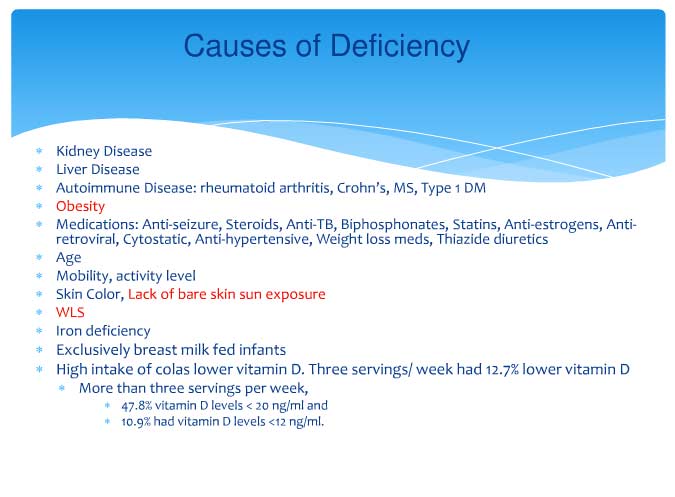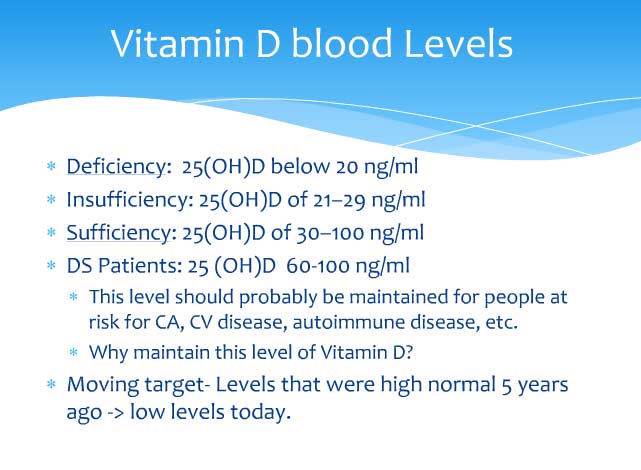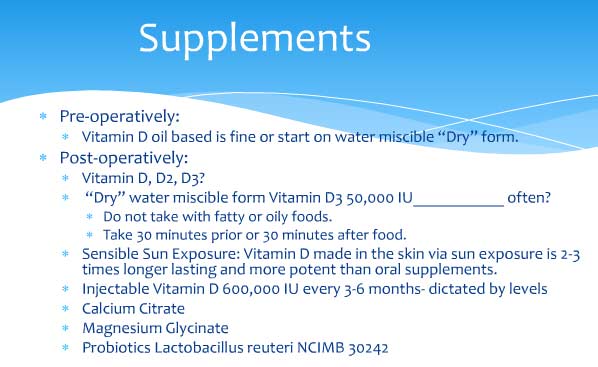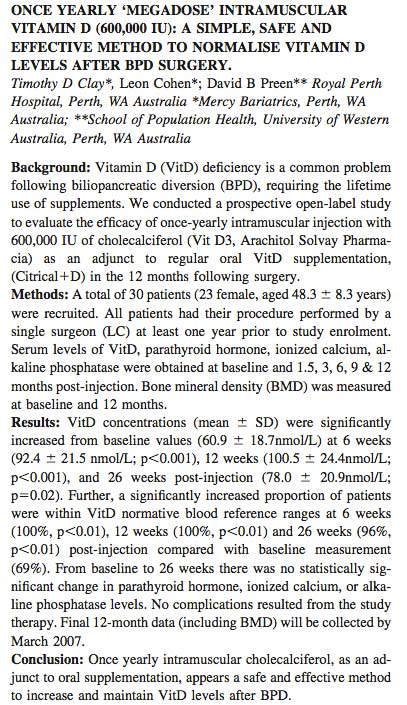Category: Vitamin D
Vitamin D2 Vs D3
March 24, 2016 9:17 am
Thank you to Contributor: Mariam Michelle Gyulnazaryan
Vitamins are organic, essential nutrients that are necessary to keep your body in good health. Most vitamins must be obtained through diet because they cannot be synthesized in the body. However, the human body is able to make its own vitamin D in the skin through sun exposure or it can be obtained by food and supplements of Vitamin D3.
Vitamin D is a fat-soluble vitamin that is responsible for regulating muscle contraction, immune function, bone health, and intestinal absorption of magnesium, calcium, phosphate, iron, and zinc. Good sources of Vitamin D include sun exposure, dairy products, fatty fish, fortified orange juice, cod liver oil, mushrooms, and supplements.
There are two types of Vitamin D: D2 (ergocalciferol) and D3 (cholecalciferol). Both types have the same mechanism of action, but different sources and kinetics.
Ergocalciferol is easily obtained through Vitamin D-rich foods in normal anatomy. However, a post Duodenal Switch patient will have less absorption of Vitamin D via food due to fat malabsorption. Ergocalciferol is hydroxylated to ercalcidiol [25(OH)D2] in the liver. Its second hydroxylation takes places in the kidney, where it is converted to the active form of Vitamin D2 known as ercalcitriol [1,25(OH)2D2]. Now in it’s active form, Vitamin D2 can bind to the Vitamin D receptor (VDR) and help the body where it’s needed.
In the epidermis of the skin, precursor 7-dehydrocholesterol (7-DHC) forms cholecalciferol as a result of UVB radiation. Several factors such as increased skin pigmentation, age, and sunscreen application reduce the skin’s production of choleciferol (6). Cholecalciferol is hydroxylated in the liver to become calcidiol [25(OH)D3]. It is then moved to the kidney for further hydroxylation to Vitamin D3’s active form known as calcitriol [1,25(OH)2D3], also called calcifediol. The active form allows binding to VDR for biological activity.
Both forms of Vitamin D have been shown to effectively increase 25(OH)D levels. Research shows that after administering a single dose of 50,000 international units (IU) Vitamin D2 or D3, both experienced a similar increase in serum 25(OH)D concentration. However, Vitamin D2 levels rapidly declined while Vitamin D3 levels remained high (1). Further studies have confirmed that Vitamin D3 is more effective in elevating and maintaining 25(OH)D levels for a longer amount of time (5). Scientists believe the most reasonable explanation for Vitamin D3’s substantial efficacy is its higher affinity to metabolites, which results in a longer circulating half-life than Vitamin D2 making it more potent(4). For a post Duodenal Switch patient, due to fat malabsorption, it is important to use “Dry” Water Miscible form of Vitamin D3.
A 25-hydroxy Vitamin D blood test is the most accurate way to measure levels. A level between 20 ng/mL-50 ng/mL may be considered sufficient, however in our bariatric practice we would like to keep the levels in 60-80 ng/mL. It is worth nothing that recently the reference ranges was increase to 30-100 ng/mL. Treatments of Vitamin D deficiency include frequent sun exposure, fortified foods, supplements, and injectables. in addition to 50000IU of vitamin D on daily basis in emulsified (water soluble) formulary or unto 600,000IU in injection form. The parallel guide for adequate vitamin D supplementation is normalization of PTH levels. Monitoring these levels is imperative in a post bariatric patient.
In conclusion, studies have shown that Vitamin D2 and D3 are not interchangeable. Although they have comparable absorption, Vitamin D2 has a shorter duration of action which makes it less potent than Vitamin D3. Researchers have shown that neither form is harmful to treat Vitamin D deficiency, but they should not be considered bio-equivalent.
References
1. Armas LAG, Hollis BW, Heaney RP. Vitamin D2 is much less effective than Vitamin D3 in humans. Journal of Clinical Endocrinology & Metabolism. 2004; 89(11) 5387-5391.
2. Creighton D, Ignaszewski A, Francis G. Vitamin D: new d-fence against cardiovascular disease. BCMJ. 2012; 54(3) 136-140.
3. Holick MF, Schnoes HK, DeLuca HF. Identification of 1,25-Dihydroxycholecalciferol, a form of Vitamin D3 metabolically active in the intestine. PNAS. 1971; 68(4) 803-804.
4. Hollis BW. Comparison of equilibrium and disequilibrium assay conditions for ergocalciferol, cholecalciferol and their major metabolites. J Steroid Biochem. 1984; 21(1) 81-86.
5. Houghton LA, Vieth R. The case against ergocalciferol (Vitamin D2) as a vitamin supplement. Am J Clin Nutr. 2006; 84 (4): 694-697.
6. Howick Mf, Binkley NC, Bischoff-Ferrari HA, Gordon CM, Hanley DA, Heaney RP, Murad MH, Weaver CM. Evaluation, treatment and prevention of Vitamin D deficiency: an Endocrine Society clinical practice guideline. J Clin Endocrinol Metab. 2011; 96(7) 1911-1930.
7. Johal M, Levin A. Vitamin D and Parathyroid Hormone in general populations: understandings in 2009 and applications to chronic kidney disease. CJASN. 2009; 4(9) 1508-1514.
8. Tetley EA, Brule D, Cheney MC, Davis Cd, Esslingen KA, Fischer PWF, Friedl KE, Green-Finestone LA, Guenther PM, Klurfeld DM, L’Abbe MR, McMurry KY, Starke-Reed PE, Trumbo PR. Dietary reference intakes for Vitamin D: justification for a review of the 1997 values. Am J Clin Nutr. 2009; 89(3) 719-727.
9. Tripkovic L, Lambert H, Hard K, Smith CP, Bucca G, Penson S, Chope G, Hypponen E, Berry J, Vieth R, Lanham-New S. Comparison of Vitamin D2 and Vitamin D3 supplementation in raising serum 25-hydroxyvitamin D status: a systematic review and meta-analysis. Am J Clin Nutr. 2012; 95(6) 1357-1364.
Pregnancy And Weight Loss SurgeryExclusive Member Content
November 21, 2015 5:34 pm
Neuromuscular Disease After Weight Loss Surgery
June 08, 2015 11:30 am
Weight loss surgical procedures may result in varying degrees of nutritional deficiencies. Some of these nutritional deficiencies may cause neuromuscular disease if left untreated, these include vitamins, minerals, and protein. The long-term effect of these deficiencies may presents as neuromuscular conditions including, weakness, numbness, confusion and all others if not-diagnosed and untreated. It is important to note that all weight loss surgical procedures require lifetime vitamin, mineral supplements and protein monitoring and possible supplements.
The table below outlines some of the specific neurological and neuromuscular disease complications following bariatric surgery. The most common deficiencies seen with the duodenal switch operation are fat soluble vitamin deficiencies. These include, Vitamin A, D, E and K. Duodenal Switch patients need oral supplements of Dry “Water Miscible” type of Vitamin A, D, E, and K based on their laboratory studies and needs.
The neurological deficiencies are manifested much more frequently with the Gastric Bypass than the duodenal switch operation. The most common nutritional deficients are that of B1, B12, Folate deficiencies that are common in Gastric Bypass. A list of possible neurologic deficiencies and there associated symptoms were summarized by Becker (2012). Another article with Nutritional Neuropathies.
Nutritional deficiencies are seen in a number of illnesses including weight loss surgery patients.
Zinc InformationExclusive Member Content
April 17, 2015 7:22 am
Medications that negatively affect bone loss and contribute to Osteoporosis (Moved)
March 31, 2015 4:07 pm
An Example of Medications that may cause bone loss
It should be noted that this list is NOT all inclusive and gives the type of medication but does not list all the medications in that category that may affect bone health. I would also like to point out that the Proton Pump Inhibitor labels should probably be changed to “Acid Reducers” as reducing acid is the issues. https://americanbonehealth.org
Hyperparathyroidism and Weight Loss Surgery
March 13, 2015 5:57 pm
Hypoparathyroidism refers to elevated level of parathyroid hormone levels (elevated or high PTH). Parathyroid glands are two small glands that are located behind the thyroid gland. The primary function is regulation of the calcium level in the bloodstream. Parathyroid levels may be abnormally elevated for a number of reasons.
1-Primary Hyperparathyroidism
There may be abnormalities within the parathyroid glands themselves including benign and malignant tumors. Laboratory studies to assist in identifying Parathyroid hyperplasia are calcium, phosphorus, magnesium, PTH (parathyroid hormone), Vitamin D and possibly a 24 hour urine, kidney x-ray, and Dexa scan. The calcium levels in parathyroid hyperplasia are usually elevated and Vitamin D levels low. Patients can present with hypercalcemia symptoms such as kidney stones, nausea, vomiting, peptic ulcer, constipation, bone pain, bone weakness, depression, lethargy, fatigue. There are two types of Primary Hyperparathyroidism parathyroid hyperplasia and parathyroid adenomas. These both can at times be genetically linked.
Once the cause of elevated parathyroid hormone has been identified as primary hyperparathyroidism, the treatment involves surgical removal of one or more of the adenoma(s) or removal of 3.5 off all of the parathyroid glands if hyperplasia is diagnosed.
Parathyroid hyperplasia: When the growth involves all 4 of the glands. These may effect either one of the glands or all 4 of them. Majority of these are benign.
Parathyroid adenoma(s) refers to the abnormality or benign growth of one or more of the parathyroid glands.
2- Secondary Hyperparathyroidism
This is probably the most common cause of hyperparathyroidism imposed on a weight loss surgical patient. The elevated parathyroid hormone is the physiologic response all of the parathyroid glands to low calcium level. The parathyroid hormone is elevated in order to favor bone breakdown and make available for calcium to be circulating in the bloodstream. Parathyroid hormone also facilitates reabsorption of the calcium from the urine and improve absorption of the calcium from the GI tract.
The most common causes of secondary hyperparathyroidism is Vitamin D deficiency, weight loss surgery, kidney failure, Celiac or Crohn’s Disease. Lower levels of Vitamin D decrease the intestinal calcium absorption and thereby increasing PTH secretion. Vitamin D is the transport molecule for calcium. Symptoms may include bone or joint pain, muscle weakness, osteomalacia, low to normal blood calcium levels. The treatment of secondary hyperparathyroidism is correction of the underlying low calcium, low vitamin D levels. We have our Duodenal Switch patients take calcium citrate and dry water miscible type of Vitamin D3. Some people may require vitamin D injection in order to overcome deficiencies. You can find a list of supplements on our website and/or our starting point supplement recommendation in our patient workbook
Articles on Secondary Hyperparathyroidism following Weight Loss Surgery:
https://www.ncbi.nlm.nih.gov/pubmed/23015268
https://www.ncbi.nlm.nih.gov/pubmed/16354517
Vitamin D Metabolism, Deficiency and Treatment
August 23, 2014 4:17 am
Vitamin D and Weight Loss Surgery
Patch or Spray Vitamins
August 15, 2014 10:37 pm
At the last group meeting, there were several questions whether vitamin D and other vitamins would be absorbed via patch (transdermal) and spray (buccal/sublingual) routes. After reviewing several resources, the only article I could find was for transdermal Vitamin D absorption. However, if we look at the mechanism for each route we can make an educated assumption.
Transdermal route of absorption (without additional absorption enhancers) (ref) requires a molecular mass less than 500 g/mole, high lipophilicity (affinity to fat or lipids), and low required daily dose (less than 2mg). The fat-soluble vitamins are definitely lipophilic, all of them have molecular weights less than 500 g/mole and daily dose is under 2mg. It seems that hydrophilic medications (that have an affinity to water) may have less ability to be absorbed with this route unless a chemical enhancer is added to the product. Most vitamins and minerals have lower molecular weights except Vitamin B12 which has too high of a molecular weight unless an enhancer is added. The transdermal route has slower absorption than buccal (oral mucosa) but faster than usual tablet oral route. The down side to transdermal route is possible skin issues due to medication, adhesives, and also different rates of absorption due to skin thickness and condition.
Buccal/sublingual route of absorption is dependent on lipid solubility, oil to water partition coeffincient, saliva pH, small to moderate molecular weight, and oral mucosa thickness. The mechanism of action is osmosis, which means items that readily dissolve in water are easily absorbed. Unlike orally ingested medicates, that take time to absorb and need to be filtered and/or processed in the liver, sublingual route is fast absorbing and the liver is bypassed. The down side to this route is it disrupts eating and drinking and is not efficient with smoking due to vasoconstriction.
An e-mail was sent to the companies inquiring about the outcomes of their products with people with malabsorption issues. No response was received from the spray vitamin companies.A request was also sent to obtain any research articles they may have but a response has not been received at this time. The following is the response I received from the maker of Patch MD.
“I am the president and founder of Patch MD. We design Patch MD to help people that have digestive issues and malabsorption. Our whole premise is to avoid the digestive track, by doing so we avoid dealing with conditions such as short bowel syndrome, acid reflux, and bariatric surgery to name a few. People also with Crohn’s disease and iliac disease are challenged with digestion and absorption every day of their life. Our patches are designed specifically to pass nutrition through the skin into the bloodstream. We get letters every day from people that have had bariatric surgery and were unable to get vitamin D, calcium, the B’s and Vitamin A and K, our product works because we use the skin as our delivery system, absorption is through the skin, avoiding all digestive potential issues. The only problem that we may have is we tell our customers to use no lotions or cream in the patch application area, as you may understand it will prevent absorption. We are going to be at a national convention this weekend in Manhattan Beach California to take part and display our products at the ObesityHelp conference. They ask us to take part as they were getting great reviews from their members that are using the patch. All were improving their blood work after taking Patch MD patches.”
Earl Hailey, President Patch MD
In light of the review of data, it would seem that the transdermal route would be beneficial to people who are having issues maintaining blood levels of fat-soluble vitamin levels. The other vitamins also have a good prospect of absorption via transdermal route. Buccal or sublingual (sprays) would seem to have a better outcome for water-soluble vitamins unless there is an additive added to the product to increase the solubility of the fat-soluble vitamins and make them water miscible. We must realize that there is no data for Duodenal Switch patients and very little data regarding these routes of absorption with vitamins specifically. If you are going to try these types of vitamins you should be extremely diligent in following your laboratory studies for vitamin levels with greater frequency until it is determined they are maintaining your blood levels.
Also, it should be noted that water miscible (dry) Vitamin A, D, E, K are the only type of these vitamins a DS patients should be taking. Over the counter Vitamin A, D, E, K are fat-soluble and due to the fat malabsorption after DS these type of vitamins are not appropriate to maintain blood levels. Water miscible (dry) vitamins should NOT be taken with fatty or oily foods and should also be taken 30 minutes prior or 30 minutes after eating. The water miscibility makes them water soluble and therefore will not have optimal absorption if taken with fat. Fat also increases the rate of digestion through the small bowel after DS and decreases the amount of time the vitamin has in the bowel and therefore, decreases absorption. They are best absorbed when taken on their own.
The good news patches and spray routes of administering medications and supplements is an up and coming area of research. There are several ongoing research studies and new developments on the horizon for increasing absorbability of transdermal route with different types of additives and techniques.
August 6, 2014 Group Meeting Recap
August 08, 2014 6:35 pm
August’s group meeting/webinar topic was Vitamin D. Dr. Keshishian will be adding the voice over to the slides and it will be uploaded to when it’s completed. But in the meantime here are some highlights. Webinar here.
Vitamin D is a fat soluble vitamin has many important functions including bone health, cardiovascular health, blood glucose regulation, anti-cancer, anti-inflammatory, muscle function, respirator function, brain development and health, and immune function. There are several very large studies investigating other functions of Vitamin D. Vitamin D knowledge is in the midst of huge changes due to these upcoming studies.
Vitamin D metabolism is a complicated process whether via photo conversion in the skin or supplementation. Either way Vitamin D metabolism requires cholesterol to be converted to its active form. The fat-solubility is the primary reason for deficiency after Doudenal Switch, due to malabsorption of fat needed for conversion of Vitamin D. The Parathyroid gland helps to regulate absorption of Vitamin D. It is an inverse mechanism, meaning a high Parathyroid level signals more absorption of Vitamin D and calcium also.
Vitamin D deficiency is a World Health Organization priority. There are several causes some related to sunscreen use, disease processes, WLS, cola intake, diet related and medications. These can compound Vitamin D deficiencies.
Dr. Keshishian has new guide lines for Vitamin D levels. Due to the changing research regarding Vitamin D these guidelines are changing. There are some endocrinologists in Vitamin D research that are recommending even high standard of Vitamin D. DS patients should be well above the border of insufficient and sufficient due to underlining contributing facts for deficiencies and the lack of absorption. Parathyroid Hormone levels are inversely related. High PTH level can indicate Vitamin D deficiency and increase need for calcium. Calcium blood levels are not a good indicator of calcium or Vitamin D needs as the body is efficient at maintaining Calcium blood levels by breaking down bone mass due to the critic bodies need for circulating calcium.
Supplementation options are as follows: Please note that most over the counter Vitamin D is not appropriate for DS absorption. DS patients need to take “Dry” water miscible Vitamin D3. Please see the previous blog post regarding https://blog.dssurgery.com/2013/08/vitamin-d-and-dry-water-soluble.html for more information and pictures of this type of Vitamin D. Vitamin D is tied to several other nutrients for metabolism such as protein, calcium, magnesium, zinc and potassium. Treatment for correcting iron deficiency and phosphorus intake counter act Vitamin D absorption as do other previous discussed dietary issues. Take oral Vitamin D supplements even if you are receiving injectable Vitamin D.
Be proactive in Vitamin D supplements by monitoring your yearly DS laboratory studies. Please call the office with any questions. If in need of Vitamin D injections please see the previous blog post for related research article and compounding pharmacies. Vitamin D injections are not common place.
Please take the Vitamin D injections post to your treating physician if you are unable to see Dr. Keshishian and are in need of Vitamin D injections. If your treating physician has any questions please let them know Dr. Keshishian is available to answer their questions.
Our food selections for the meeting where all high Vitamin D recipes. Tuna stuff mushroom (Tuna for Vitamin D and mushrooms are a good source of zinc), crustless artichoke and spinach quiche ignore the part of the recipe for the crust and just bake in pie plate without the crust, Panna cotta with a strawberry balsamic compote and toasted flax seed and hemp hulls. The panna cotta is made with milk or almond milk and gelatin which are all important in bone health. Hemp hulls are a protein source as is the milk.
Strawberry Balsamic Compote taken from https://nomnompaleo.com
1/4 C balsamic Vinegar
2C hulled strawberries, thinly sliced
2 TBSP honey
1 TBSP fresh lemon juice
1tsp vanilla extract
1/4 tsp salt
In a sauce pan heat Balsamic vinegar until reduced by half and is a thick syrup. Add the rest of ingredients and simmer over medium heat for 5-10 minutes. Remove pan from heat and use an immersion blender to puree some of the sauce. The texture is to your liking, so puree as much or as little as you would like. Store in a sealed container for up to a week or you can freeze it for long term storage. This site also has a almond milk Panna Cotta but this is not the recipe use at the group meeting.
Panna Cotta Recipe
1/2 C 2% milk mix with 2 1/2 tsp of unflavored gelatin in a bowl to rehydrate the gelatin let sit for 5-10 minutes
In a medium saucepan mix
3 C 2% milk or whole milk
one vanilla bean split in half or 1 tsp vanilla extract
2 TBSP maple syrup
1 tsp salt
heat until steaming but not boiling, about 5-7 minutes. Take off heat.
Mix 1/4C greek style yogurt into the milk and rehydrated gelatin. Then whisk about 1 C of hot milk mixture into the gelatin/milk. Add this mixture into pan of hot milk and whisk well. Pour hot Panna Cotta mixture into ramekins. Refrigerate until set, about 2 hours.
In a small frying pan toast 2 TBSP Flax seed and mix with 2 TBSP hemp hulls. Before serving top with Strawberry Balsamic Compote and flax seed/hemp seed mixture to your taste.
Injectable Vitamin D Information and Research Articles
July 11, 2014 1:06 am
Injectable Vitamin D may be needed in some cases of Vitamin D deficiency or inability to increase Vitamin D level with oral supplements. Vitamin D is a fat soluble vitamin. It plays an important role in bone metabolism and structure. It has also been found to affect the immune regulation, control off- inflammatory reactions, and also be involved in a number of broad cellular functions throughout the body. Until a few years ago, very little attention was given to vitamin D levels. More recently, we have realized that due to a number of factors, there is a tendency for vitamin D deficiency to be present in the U.S. adult population. This finding is even more pronounced and severe in overweight patients.
The recommended dose for vitamin D supplements is much larger today than it was a few years ago. For example, it is not too uncommon to recommend an average dose of a 50,000 (IU) international unit of vitamin D by mouth on a daily basis after the duodenal switch operation.
Since vitamin D is a fat soluble vitamin, it is important that the appropriate type be utilized. Dry formulation of vitamin D is needed to ensure adequate absorption. There are a number of manufacturers that produce these. When searching for Dry Vitamin D the type a patient should be looking for is “Dry” D3-50. Some larger supplement manufacturer’s carry these products. The links to these manufacturers is located here. The “Dry” type of Vitamin D should NOT be taken with fatty or oily foods. Also to optimizes absorption they should be taken either 30 minutes prior to eating food or 30 minutes after eating.
If you are deficient in Vitamin D after trying “Dry” or water miscible Vitamin D then intramuscular Vitamin D injections might be an effective way to normalize your Vitamin D levels. Vitamin D can be formulated and purchased from any compounding pharmacies that are equipped and experienced in the interpretation of injectable vitamins and minerals. Your primary care WILL need to contact the compounding pharmacy of their choose for the recommendations and be willing to make the injections available to you. UNLESS you have been told to stop taking your daily “Dry” Vitamin D tablet supplement you should continue taking it after the injection.
We are supplying the following so that your PCP will understand the research behind injectable Vitamin D and to hopefully ensure that every patient is armed with this knowledge. Vitamin D deficiencies are becoming more common place in society due to the use of sunscreen and sun shielding clothing and hats, not only Duodenal Switch patients.
This is a research paper out of Finland that discusses injectable Vitamin D for the aged. The information can translate to anyone who finds themselves in a Vitamin D deficit state. https://www.gwern.net/docs/nootropics/1992-heikinheimo.pdf
This research paper is out of Australia where despite then sun drenched climate they are experiencing a large amount of people with Vitamin D deficiencies due to sunscreen, veiling, malabsorption, etc.
https://www.direct-ms.org/pdf/VitDGenScience/Vit%20D%20deficiency%20Australia%20art%20and%20ed.pdf
Below find the order sheet with the Injectable Vitamin D concentration listed. The common dosing for the vitamin D is 600,000 IU, deep IM every 6 months till the levels are normalized. The patient then can take the oral supplements only.
Finally, this is an except from an another Australian research paper describing the use of Megadoses of injectable Vitamin D in patients after Biliopancreatic Diversion which has a malabsorptive component similar to Duodenal Switch.

